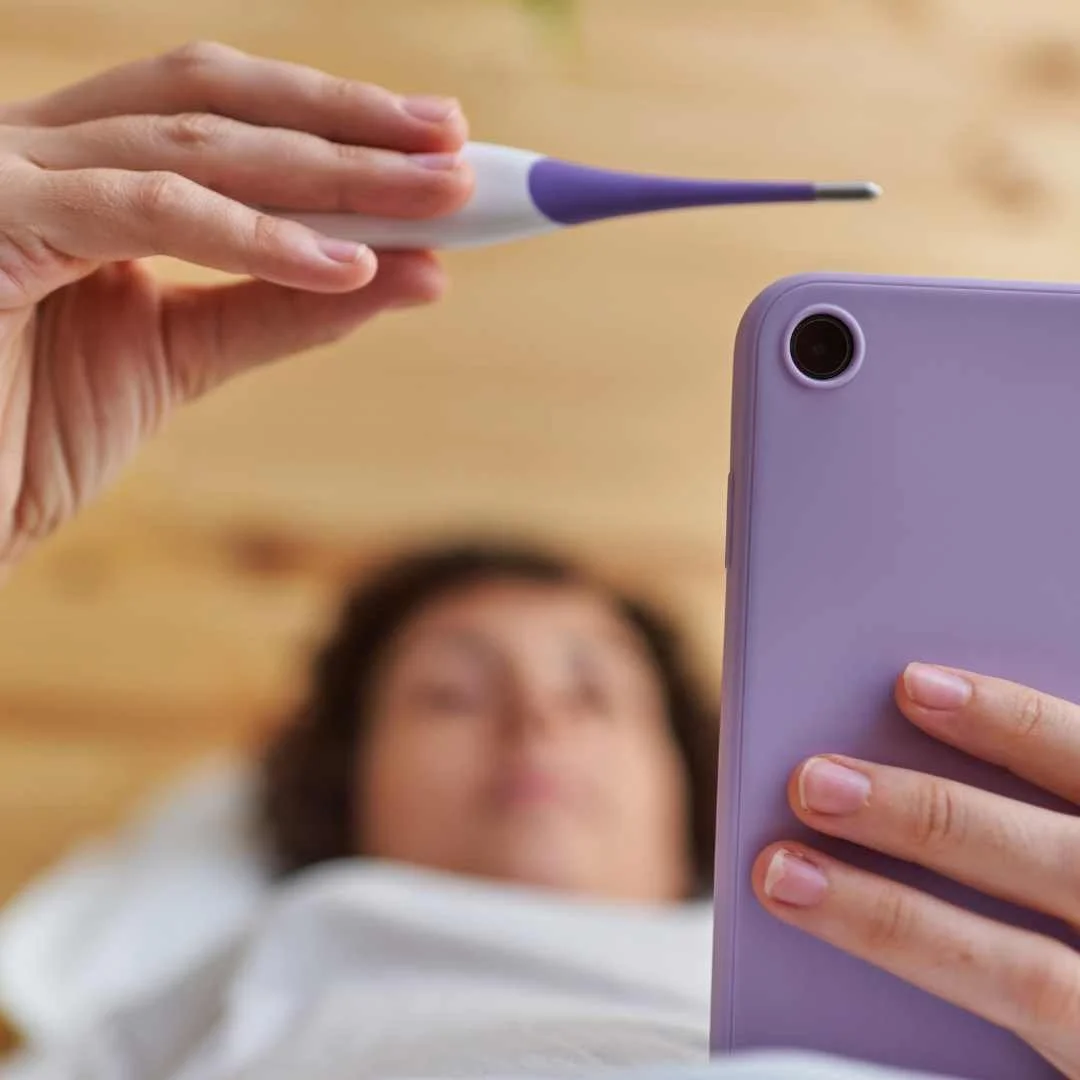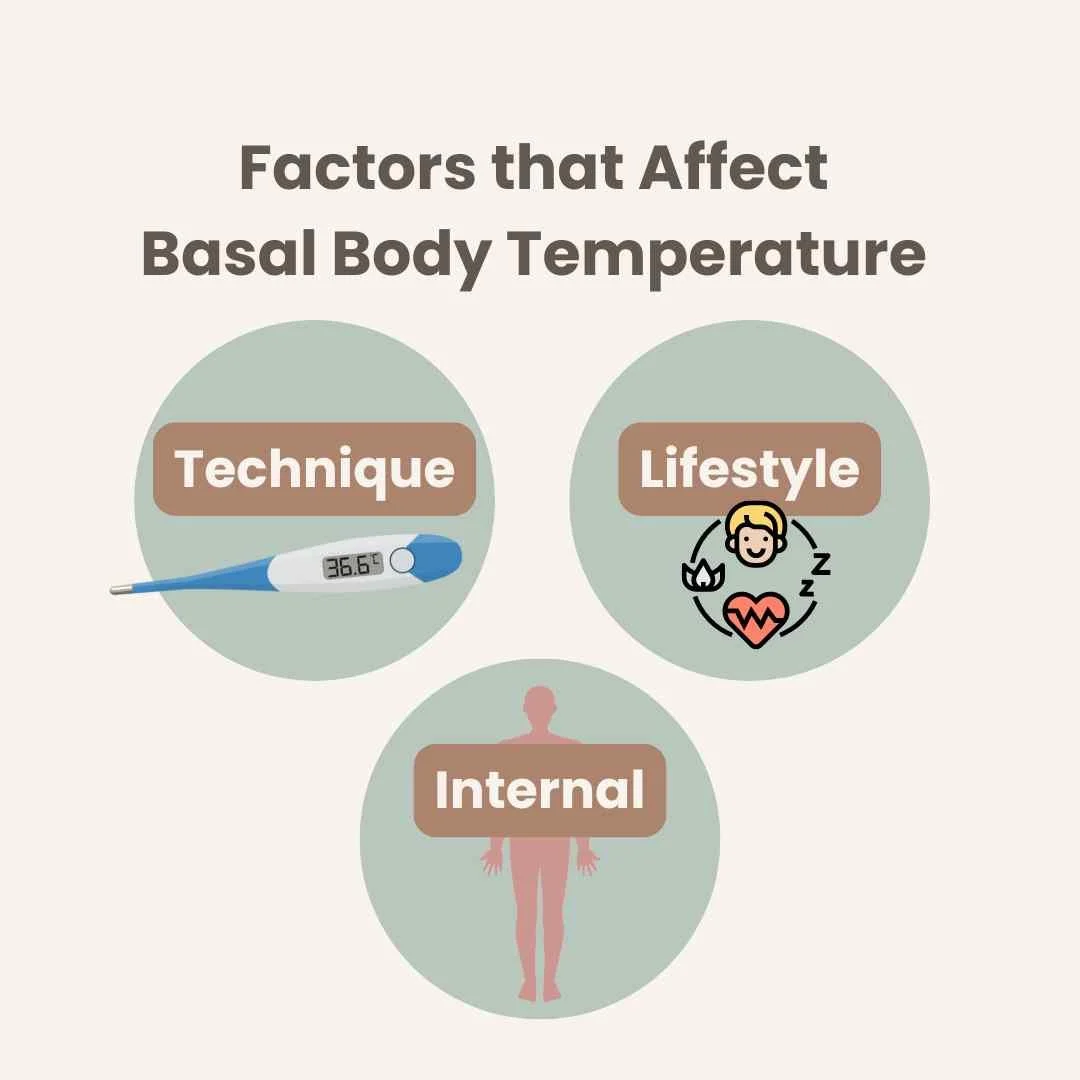Everyday Things That Could Be Affecting Your Basal Body Temperature
Did you know that certain lifestyle factors could be affecting your basal body temperature (BBT)?
This could be contributing to why it may be difficult to see a temperature shift in your chart if you are cycle tracking.
Let's get nerdy for just a brief moment!
After ovulation, the hormone progesterone causes BBT to rise by about 0.5 to 1°F during the luteal phase (2nd part of your cycle that is identified after ovulation has occurred). If you’ve ovulated, progesterone will be released throughout your luteal phase, causing your BBT to stay elevated above your coverline until your period starts.
As your period approaches, progesterone levels fall and your BBT drops back down. This is a great way to know when you should be getting your period, you'll see a decline in your BBT (usually it will fall below your coverline or close to it). This should happen 12-15 days post ovulation. If you're luteal phase is longer than 17 days, you could be pregnant!
Before ovulation, in the follicular phase, BBT averages between 97.0 and 98.0°F. The lowest point of BBT usually happens 1 to 2 days before ovulation.
Curious about how to identify a temperature shift in your chart and how to draw a coverline to confirm ovulation? You can read this recent blog post.
Here’s a rundown of situations that could affect your BBT other than ovulation.
Technique factors:
A cold thermometer, ie you keep your thermometer by an open window or out in the elements while you’re camping
Temping at earlier/later times (ideally you want to temp within 30 minutes of your regular temping time, but I always recommend to take your temperature regardless and then you can disregard it as needed)
Mouth breathing when you're temping orally
Getting up and moving around before temping
Taking a sip of water/making out with your sweetie, etc. before temping
Lifestyle factors:
Travel, time zones, time change
Varying sleeping conditions- ie sleeping next to someone or a furry friend when you usually don’t or do
Alcohol consumption
Emotional and physical stress
Pro-tip! Not all types of alcohol will affect your BBT the same. For example, wine will definitely increase my BBT but beer doesn’t have the same effect. Jot down which type of alcohol you’re drinking to see what effect it has on your BBT.
Sleep:
Irregular sleep (nursing, night shifts/swing shifts)
Not sleeping well (insomnia, restless)
Internal factors:
Fever/illness Endocrine imbalances (thyroid or adrenals)
Inflammation: ie gluten sensitivity or Celiac disease
Allergic reactions/sensitives
Certain medications (including antihistamines, antidepressants, and ACE inhibitors- you can ask your doctor if your medication has been shown to have any impact on thermoregulation)
Key Takeaways:
progesterone causes BBT to rise by about 0.5 to 1°F during the luteal phase
If you’ve ovulated, progesterone will be released throughout your luteal phase, causing your BBT to stay elevated above your coverline until your period starts.
there are various factors (see above) that could impact your BBT
learn about the different reasons your BBT could be affected and if these occur, make sure to document these in your chart
Feeling like you would benefit from a private session?
You'll receive expert support on your unique cycle from a certified Fertility Awareness Educator


